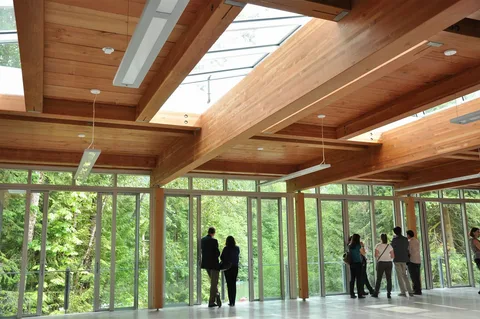In recent years, sustainable construction has gained significant traction in the architectural and engineering communities. As society becomes more conscious of the environmental impact of traditional building methods, innovative solutions are emerging to address these concerns. One such solution is Cross-Laminated Timber (CLT) design. In this blog, we will explore the fascinating world of CLT design, its benefits, and its potential to shape the future of sustainable construction.
What is CLT?
Cross-Laminated Timber (CLT) is an engineered wood product that consists of several layers of timber boards glued together at right angles. Each layer's orientation provides strength and stability to the structure, similar to the concept of plywood but on a larger scale. CLT panels are prefabricated in controlled factory settings, allowing for precision manufacturing and faster installation on-site.
Advantages of CLT Design
Sustainability: One of the primary reasons for the growing popularity of CLT is its eco-friendly nature. Wood is a renewable resource, and responsibly managed forests can offset the carbon footprint of construction projects. Using CLT can also reduce greenhouse gas emissions compared to conventional building materials like steel and concrete.
Strength and Stability: Despite being relatively lightweight, CLT possesses exceptional strength and stability. Its unique cross-laminated structure allows it to distribute loads efficiently, making it ideal for various construction applications, from residential buildings to large-scale commercial projects.
Faster Construction: CLT's prefabricated nature makes construction quicker and more efficient. The panels arrive on-site ready for assembly, minimizing on-site labor and reducing construction time significantly.
Fire Resistance: Contrary to concerns about timber's flammability, CLT has shown excellent fire resistance due to its thick cross-sections. It forms a natural char layer when exposed to flames, which can protect the inner layers and maintain structural integrity for a more extended period.
Aesthetics and Design Flexibility: CLT offers architects and designers tremendous freedom when it comes to creativity and aesthetics. Its warm, natural appearance gives buildings a unique character while also allowing for innovative and daring designs.
Lightweight and Reduced Foundation Costs: The relatively low weight of CLT panels can reduce the need for heavy foundations, resulting in cost savings during construction.
Challenges and Mitigations
Although CLT design presents numerous advantages, there are some challenges that need to be addressed:
Moisture Control: CLT panels are susceptible to moisture-related issues, which can affect their structural integrity and lead to deterioration. Proper moisture control during manufacturing, transportation, and construction is crucial to mitigate this risk.
Acoustic Insulation: Compared to traditional materials like concrete, CLT can have lower acoustic insulation properties. Integrating additional soundproofing measures during construction can address this concern effectively.
Building Codes and Regulations: Some regions might not have well-defined building codes for CLT construction, causing hesitation among builders and developers. Collaborating with regulatory bodies and ensuring they understand the benefits of CLT can foster wider acceptance.
Conclusion
Cross-Laminated Timber (CLT) design is revolutionizing the construction industry by providing a sustainable, versatile, and aesthetically pleasing alternative to traditional building materials. With its low environmental impact, strength, and design flexibility, CLT is shaping the future of sustainable construction. As technology advances and awareness grows, we can expect to see even more innovative applications of CLT in the architectural landscape, making the vision of a greener and more sustainable future a reality.


No comments yet